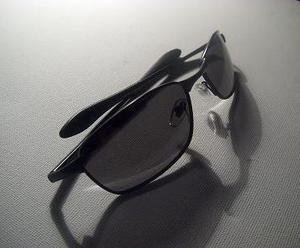Wood blinds can add a beautiful element to your home. The question is, should you buy the real wood blinds or should you buy the faux wood blinds? If you are looking for new wood blinds, you have probably seen both options and are wondering which one is better; wood blinds or faux wood blinds? After working in blind sales for several years, I would have to say that wood blinds and faux wood blinds are excellent choices. It comes down to not which is better but which would work better for your family.
Advantages of Wood Blinds
Wood blinds are made of wood so they truly look like wood blinds. Wood blinds are available in an array of colors and still maintain their wood blind look. Wood blinds are lighter which makes them easier to lift up. Since wood blinds are lighter, if you are in need of a rather large blind you may find that you can order it bigger in wood than in faux wood. If you order your wood blinds from a good company, you generally have a decent warranty that comes with your purchase.
Numerous companies that make wood blinds offer a ‘no holes’ option. ‘No holes’ means that instead of having holes for stringing, the slats have no holes and usually have little notches that hold them in place in the ladder of the blind. The no holes option of wood blinds makes them easy to clean, you can take out each individual slat. No hole also means more privacy and the blinds let less light in since they do not have the stringing holes.
Disadvantages of Wood Blinds
Wood blinds are made of real wood so they tend to be pricey and in my experience you can expect to pay $200-$500 or more per window. Wood blinds will break if your rambunctious toddler pushes down to hard on the slats, they are wood and wood breaks. Wood blinds are not generally recommended for areas with high moisture since wood can warp.
Advantages of Faux Wood Blinds
The biggest advantage of faux wood blinds is that they cost less than wood blinds and are extremely affordable. Faux wood blinds are often available in stock in certain popular sizes at your local home improvement retailer. Faux wood blinds can even be cut to size by the store and you can easily shorten the length of your blinds at home. Faux wood blinds are usually made of a PVC composite type material which means they are extremely flexible and will usually bounce back instead of break like wood blinds do when extra pressure is applied. The material that is used to make faux wood blinds also makes them easier to clean than wood as often you can clean with harsher chemicals.
Faux wood blinds generally do not warp and they often come with a lifetime limited warranty from the manufacturer (great for bathrooms even if you do the rest of your house in wood). Many companies have been making faux wood blinds for years and they often look very similar if not identical to wood blinds. You can even order your faux wood blinds in stains and colors. Some companies offer faux wood blinds with the ‘grain’ look. I personally dislike the grain look of faux wood blinds because it is usually tiny ridges that can easily collect dust. If you look at real wood blinds they generally do not have the extreme ‘grain’ look that some faux blind manufacturers have included. Some companies do offer faux wood blinds with the ‘no holes’ option as well.
Disadvantages of Faux Wood Blinds
Depending on the blind manufacturer, faux wood blinds do not always look as good as wood blinds so check out all of your options. I have found some faux wood blinds that yellow over time from the sunlight. The yellowing that I have seen usually occurs more than a year after purchase. If you are considering faux wood blinds make sure that the manufacturer warranty is longer than one year and that it covers this sort of discoloration.
Faux wood blinds are usually made of PVC or PVC composite which is generally heavier than wood. I have seen large faux wood blinds that are difficult to raise and lower due to the weight. If you have rather large windows you may find that you have to have two blinds on one head rail due to the weight of the slats.




